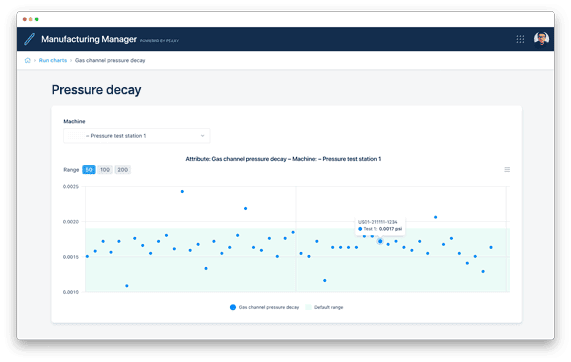There has been much talk about Industry 4.0 in recent years, but what does it really mean for battery companies either ramping up new manufacturing lines or expanding rapidly into full-scale operations? Many products and services in this space will promise increased productivity, reduced costs, and better valuations. While there’s no doubt that the benefits can potentially be huge, it really comes down to a company’s ability to standardize its processes and harness its data more efficiently. The two cannot be separate undertakings.
Industrial automation growth
More companies are achieving this through some kind of automation. Globally, industrial automation is expected to grow from $191.74 billion in 2021 to $355.44 billion in 2028 at a CAGR of 9.2% in this period¹. Other estimates place it lower, but there’s no question that more businesses will realize the benefits of automation and choose to invest in it. Growth for robotic technologies surged last year over 20% in the first quarter alone. Last year was the first time in North America that robot orders for non-automotive sectors surpassed automotive orders, totalling 31,000 units valued at $1.57 billion.²
While the initial cost can be significant, many companies are investing in at least some kind of automation that involves not only robots to assist in manufacturing, but also other devices and machines that connect, control and monitor every aspect of the manufacturing process. Using sensors, data is collected at the source and saved to the cloud in real-time using low latency 5g and other methods to allow for analysis and monitoring. The sensor market alone is expected to reach $33.56 billion by 2027 at a CAGR of 7.2%³.
Industrial automation defined for a battery company
The production of industrial batteries, regardless of the underlying chemistry, is most often characterized by the dual requirements of needing to produce high numbers of identical cells, and then combining batches of these cells into batteries where each individual cell is a potential point of failure for the entire battery.
Each point of failure can become very expensive. During production, it may be too late to swap out a bad cell if the issue isn’t discovered soon enough. And once deployed to the field, batteries that fail prematurely are also costly — not just in terms of the asset that needs to be replaced, but also due to maintenance costs and lost productivity.
Modern battery manufacturing plants thus rely heavily on industrial automation, to replace manual tasks with machines that can provide higher levels of productivity and quality. Automated tasks can also increase safety by allowing robots to operate in more potentially hazardous conditions.
But automation is not just a prerequisite for consistency. An often overlooked benefit is that it provides improved data accuracy by automatically capturing granular manufacturing data for each serialized component, cell and composite battery at scale. This data in turn brings a critical three-fold benefit to the manufacturer.

Equipment automation and data analysis is truly possible only after standardized manufacturing processes and data parameterization takes place.
The three hidden benefits of industrial automation
For each automated step in the process — be it pressing, sintering, welding, pressure testing, EIS testing or battery formation — programmable logic controllers (PLCs) instruct machinery to perform tasks with a high degree of repeated accuracy. At the same time, these PLCs also capture the results of the task via sensor data. The sensor data, when shared in real time with software like Peaxy Lifecycle Intelligence (PLI) that threads the data properly to the serialized asset in question, in turn makes these three benefits available:
Real-time quality control of assets: For each component, cell or battery for which a digital manufacturing traveler is tracking the manufacturing process, ingesting PLC data into the manufacturing traveler in real time ensures that no asset proceeds to the next step if the current step produces measurements outside a valid range defined by the quality control engineer. This ensures that errors are captured at the source of the issue, not downstream in the process, where it may be too late to fix them. Even if a cell cannot be reworked, it can be scrapped to prevent it from being a point of failure in a battery composed of many cells.
Real-time automation management for machinery: While the quality control of individual serialized assets provides a first line of defense, it is important to find the underlying cause of manufacturing variability as soon as possible. It may be that a bad batch of components is causing a consistent deviation in sequentially produced cells; or perhaps a machine has been miscalibrated or has started to malfunction.
This is where live run charts are useful. By presenting the point of view of a specific PLC sensor capturing measurements of every asset for that step, quality control engineers can pinpoint exactly when a manufacturing run starts going awry, and fix it before the results affect downstream processes. In particular, if multiple machines are operating in parallel, sudden deviations or excessive variability in one machine are a surefire sign of a manufacturing process in need of tweaking.
Traceability and provenance: In addition to the real-time benefits of making this data accessible to QC engineers on the factory floor, there is a further benefit that comes from capturing this data, threading it to the serial number, and storing it for the lifetime of the asset: The potential for both backward-looking failure analysis and forward-looking predictive analytics.
For grid-destined batteries being built and tested at an at-scale facility (or even pilot line), one can expect to capture 2,000-4,000 parameters per battery, assuming a moderate level of automation. These parameters are key for BoM traceability and battery provenance. Threading such parameters to each serialized battery is a precondition for smarter warranty and maintenance regimes once the batteries are deployed in the field.
In this case, the manufacturing data becomes useful much later, when the asset is deployed in the field and generating performance data. All sorts of regression analysis become possible, generating insights that allow operators and owners to minimize costs from downtime, recalls, liquidated damages or even overzealous maintenance regimes.
For example, if certain battery deployments start showing performance issues, the complete data manifest from their digital manufacturing travelers can be mined for correlations. It may turn out these batteries share cells built with the same sub-par batch of electrolyte, or were welded on the same miscalibrated machine. Not only is the root cause discoverable; all other batteries likely to suffer the same issues can be identified, located and preemptively replaced.
Conversely, this data can help determine whether the narrow tolerances of a certain manufacturing process are strictly necessary for the required operating envelope, or whether broader validation ranges lead to a negligible performance impact. In the case of PLI’s digital manufacturing traveler, QC engineers can assign non-conformance report codes to extended validation ranges. Batteries whose measurements end up in these ranges are approved but tagged with unique codes that can later be correlated to performance metrics. If there is no performance hit for batteries using the laxer manufacturing criteria, QC engineers may use this insight to lower manufacturing costs.
Takeaway
While the main bottom line benefits of automation are cost savings and reduced lead times, there are underlying benefits as well. At the most basic level, the process of setting up a new automation is often extremely instructive, since it presents the challenge of creating the most optimized set of steps, with ready access to the most relevant data regardless of its origin. This challenge can even extend into organizational efficiencies to ensure there are no hidden factories, data silos or roadblocks in making key decisions.
Capturing, threading and storing all the relevant data during the manufacturing process is a natural part of establishing industrial automation. Apart from the often cited benefits above, establishing a cloud-based single source of truth for your battery data has both immediate as well as long-term benefits which only grow as an asset accrues a lifetime of operational data. In our experience, this is a defining capability that many companies have yet to achieve.

